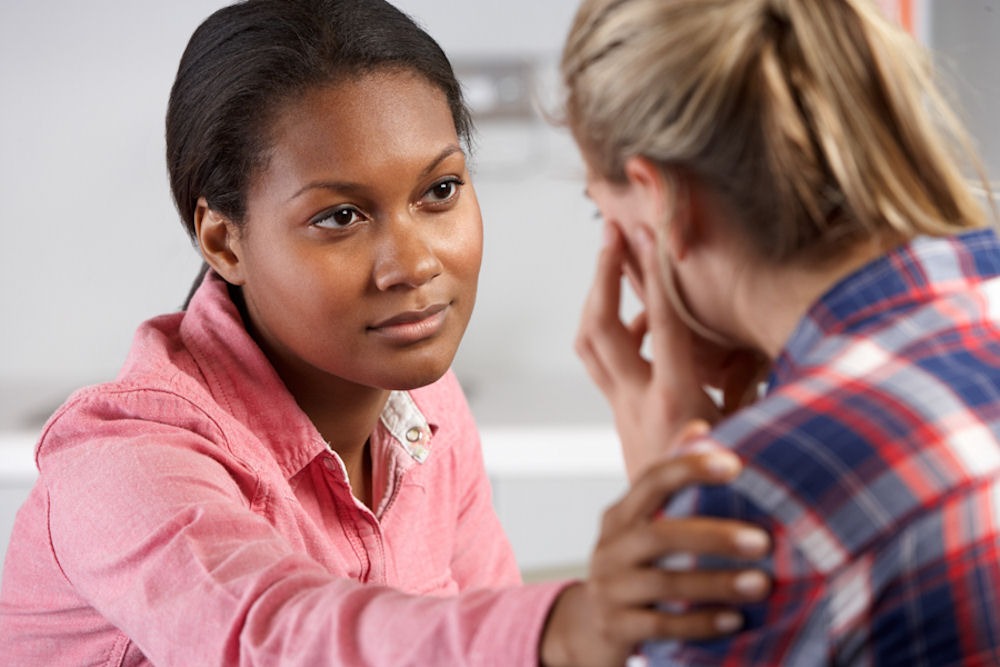Also known as oniomania, shopping addiction is a behavioral addiction characterized by the constant need to shop and buy things despite negative consequences. Like many behavioral addictions, shopping addiction may not be viewed in the same light as a substance addiction. It may even be discussed in a joking manner. In fact, the terms “shopping addiction” and “shopaholic” are often misused or used in non-serious ways, leading to many people not actually knowing what a shopping addiction is.
But what is shopping addiction? It’s a serious condition that can have significant financial and personal consequences when not properly addressed. It can also be known as compulsive buying disorder (CBD), although this focuses more so on the act of shopping than enjoying the purchases themselves. Up to 5.8% of people suffer from CBD, which means that this condition is far more common in today’s society than people may think. It’s important to know the truth about this condition and available treatment options.
What Causes Shopping Addiction?
A shopping addiction is a behavioral addiction. However, just like substance addiction, a shopping addiction can be brought on by a number of psychological, emotional, and societal influences. Shopping can also be used as a coping mechanism or a form of unhealthy self-medication for dealing with issues such as stress, anxiety, or low self-esteem.
Choosing to go shopping on occasion to cheer yourself up doesn’t necessarily mean that you will develop a shopping addiction. However, just like with alcohol or other addictive substances, doing so in an unhealthy manner can create a pattern of going shopping whenever anything goes wrong. This can start a cycle of addiction.
However, certain factors can lead to the development of a shopping addiction. These may include:
Culture and Society
Unless you live completely off the grid, you can’t escape advertisements and other societal influences that encourage you to make purchases. Whether it’s ads on TV, the radio, podcasts, or billboards, companies want people to buy their products. They will do whatever they can (to an extent) and spend a lot of money to convince us to do so. Thanks to the boom in social media, the concept of social media influencers has provided another way in which companies can reach us even when you’re just trying to enjoy entertainment.
Whether intentional or not, all this advertising can lead people to believe they won’t be truly happy unless they purchase whatever item they are trying to sell. Many of these advertisements work to convince people that their lives will be better or easier if they purchase their product (regardless of if they are not able to afford it).
Beyond advertising, once the company has people in the store (physically or online), they are constantly bombarding them with “rewards” and points systems to incentivize more spending. They may offer limited-time offers, exclusive discounts, or loyalty rewards to those in exchange for additional spending.
All of this, one way or another, can convince people to buy more, buy outside of their means, and buy products that they don’t even need, all to chase perceived happiness. But it’s important to know that that message is coming from people who will receive money from our purchase.
Gratification
The reason why companies try to convince us, whether intentionally or not, that buying their products will make us happy is because it can be true. Think about the feeling you get when you buy a new outfit, or a new TV, or something else that you really want. You experience that feeling because shopping can provide an immediate rush, similar to a drug or illicit substance. However, just like the dopamine rush produced by a drug or substance, the feeling is short-lived. The brain learns that shopping produces that positive feeling and sense of satisfaction, so it works to convince the body to repeat the action.
For people struggling with mental conditions, such as anxiety disorders or clinical depression, shopping can be a way to distract from whatever larger problem or negative feelings that may be lingering. While shopping may seem like a healthier alternative compared to taking drugs or drinking alcohol, shopping addiction can lead to many similar problems. It can have both mentally and financial consequences, as well as a major impact on those close to the addicted person (such as friends and family members).
Signs and Symptoms of Shopping Addiction

Because shopping is part of everyday life and it’s mostly impossible to avoid spending money, it can sometimes be difficult to differentiate between healthy and unhealthy shopping.
If you fear that either you or someone you know may be suffering from a shopping addiction, here are some of the key signs to look out for:
- An inability to control spending
- Going into debt as a result of shopping
- Frequently shopping
- Experiencing a high or rush after making a purchase
- Constantly thinking about shopping
- Neglecting daily responsibilities as a result of shopping
- Lying about or covering up purchases
- Getting more credit cards (or other form of temporary or loaned money) without paying off existing debt
Is Shopping Addiction a Symptom of Something Else?
Much like other forms of addiction, shopping addiction can be a byproduct of an undiagnosed or untreated mental health condition. In this instance, shopping, like drinking or doing drugs, is the outlet used to “escape” (even if just temporarily) and feel better.
Some of the most common mental health conditions associated with shopping addiction include:
Obsessive-Compulsive Disorder (OCD)
Someone with OCD can be more susceptible to developing a shopping addiction due to the nature of their condition. The repetitive act of purchasing items can serve as a ritual to alleviate distress, even when the items are unnecessary. Shopping can often be used as a way to temporarily alleviate or relieve symptoms, much in the same way other compulsions do.
Attention-Deficit Hyperactivity Disorder (ADHD)
Impulsivity is a key symptom of attention deficit hyperactivity disorder (ADHD), making someone with this order more likely to participate in compulsive shopping. Additionally, someone with ADHD may also experience difficulty with delayed gratification. This can make it challenging to resist the urge to make impulsive purchases.
Anxiety and Depression
Shopping can often be a way to self-soothe or get some quick bursts of positive feelings. This temporary high can be used to mask negative feelings like sadness, stress, or anxiety. While this may appear to be effective in the short term, all it is doing is actually worsening the existing condition or conditions in the long run. It also starts a cycle of shopping dependency and addiction. When the person works on this addiction, they lose a coping mechanism for a bigger problem.
Low Self-Esteem
Some people turn to shopping in order to improve their self-image. They may believe that buying a new outfit or something they saw trending on social media will make them feel better about themselves and their situation. But if they don’t need or can’t afford the item, the shame from making the purchase may only exacerbate the problem.
How Shopping Addiction is Treated?
While some people may not view a shopping addiction in the same light as they do substance abuse, the fact of the matter is that shopping addiction is a condition that requires treatment much in the same way that other addictions do.Some ways in which shopping addiction can be addressed and treated include:
- Cognitive Behavioral Therapy (CBT): One of the most effective treatments for shopping addiction, CBT techniques help the person recognize the thought patterns or influences that led to their shopping problem and replaces them with healthier coping mechanisms.
- Individual Therapy: Developing strategies in individual therapy can help with developing more structured and healthy spending habits, such as setting spending limits.
- Mindfulness: Practicing mindfulness techniques can help with becoming more aware of the emotions and impulses that previously sparked (or led to) addictive shopping behaviors.
- Support Groups: Joining support groups like Debtors Anonymous can provide a much-needed support system, as well as accountability while the person works through their issues.
- Financial Counseling: Working with a financial counselor can help better develop money management skills while recovering from previous spending habits. Creating a structured budget and setting spending boundaries are essential steps in overcoming shopping addiction.
Heal From Addiction at First Steps Recovery
At First Steps Recovery, we understand that behavioral addictions, including compulsive shopping, often stem from deeper psychological conditions. While we do not offer specialized treatment for shopping addiction itself, we provide evidence-based therapies to address the underlying mental health concerns that contribute to compulsive behaviors. Our team of compassionate professionals offers individualized treatment plans that include support for co-occurring disorders.With the right support and treatment, you can overcome shopping addiction and reclaim control over your financial and emotional well-being. If you are ready to take control of your life and find healthier ways to manage stress and emotions, contact us today to start your journey toward lasting well-being.
References:
Dr. Belis Aladag is a board-certified physician in Addiction Medicine and Family Medicine, with a Master of Public Health from Johns Hopkins. She brings more than 15 years of experience in clinical care, medical education, and leadership. Recognized as a “Top Doctor” in Sacramento Magazine and Los Angeles Magazine, Dr. Aladag is dedicated to compassionate, evidence-based care and expanding access to mental health and addiction services.





